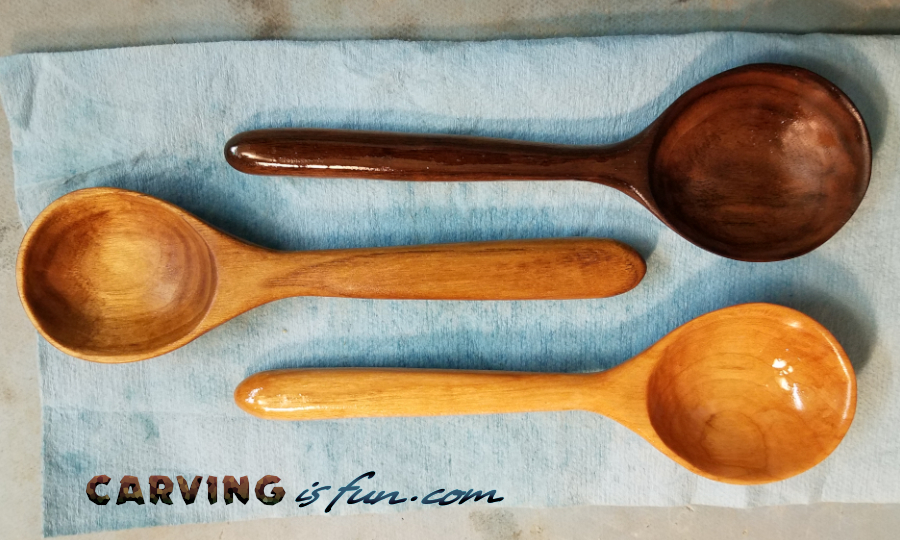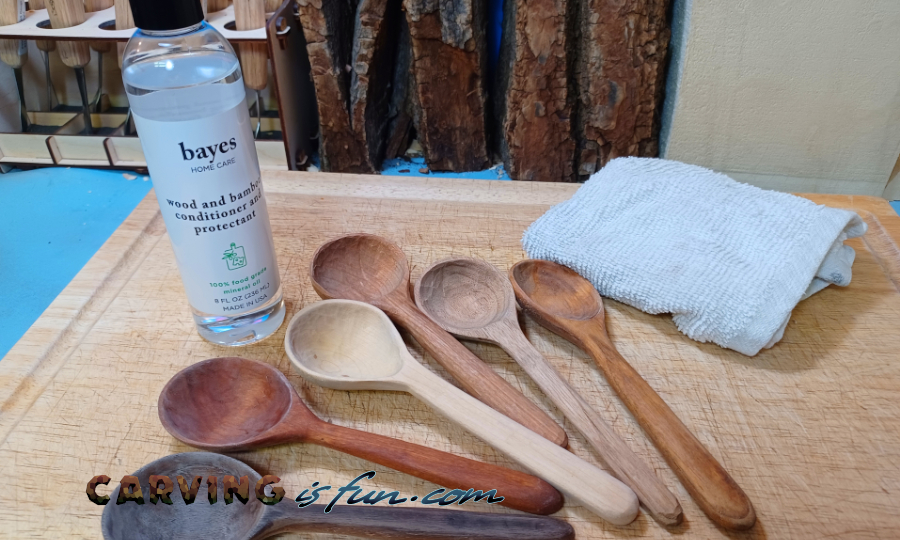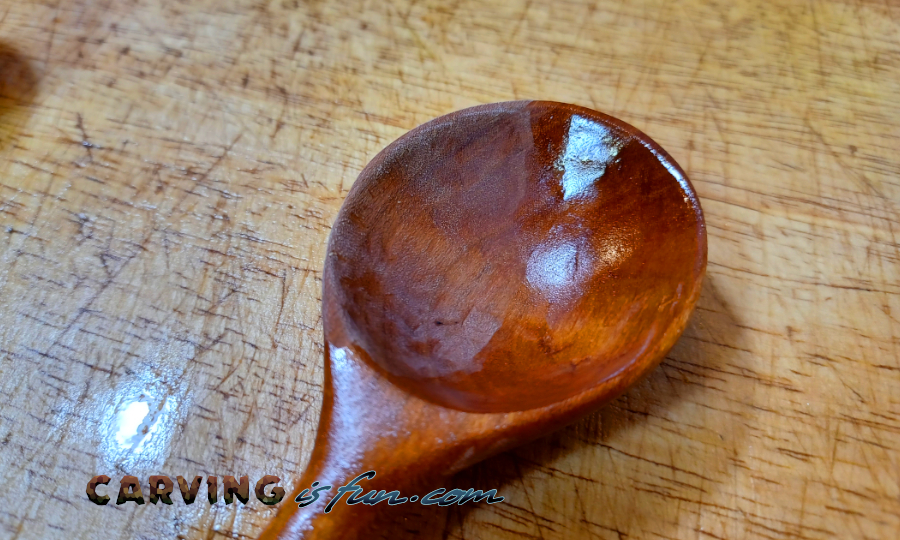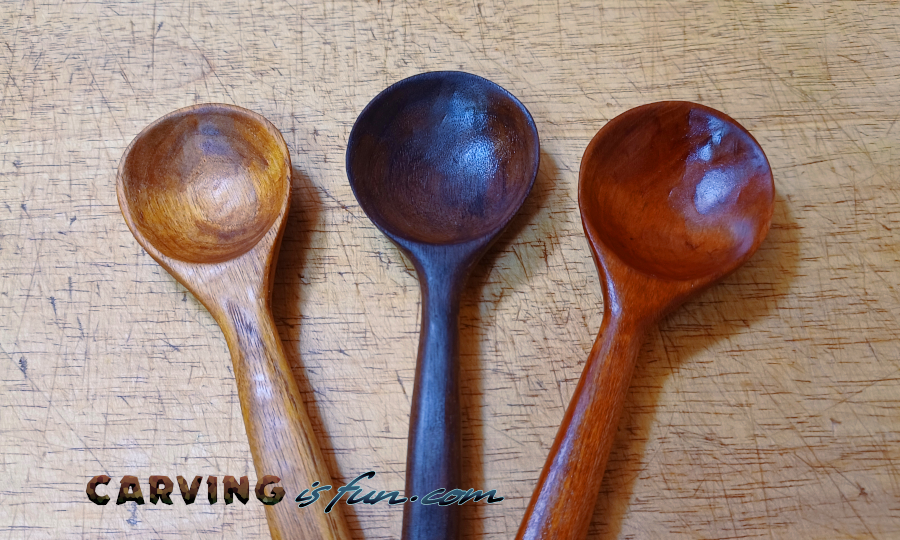You might have a very precious wood carving project or cutting board in your home that you would like to preserve for many years to come. Although you might want to take every action necessary to preserve that precious item, you just aren’t sure how to do it. You might be considering using something like mineral oil, but is that the appropriate thing to use?
Generally, using mineral oil on wood carving projects and special food-grade mineral oil on kitchen cutting boards will seal, hydrate and protect it from drying out or cracking for years to come as long as you regularly apply the mineral oil.
Keep reading on to discover more about mineral oil that can be used for wood carvings and food-grade mineral oil for kitchen cutting boards in the following sections.
How to Apply Mineral Oil to Wood Carvings and Cutting Boards

When you have finally finished your wood carving project or if you have looked at your well-worn cutting board and wanted to do more to make them shine and last long, you probably have considered using mineral oil to restore these items.
Mineral oil, in various forms, can be used to treat, hydrate, restore, seal, and protect your wood items from cracking and accelerated aging. You might be surprised to know that there are a few types of mineral oil on the market, and it DOES matter which one you use with each project or item!
Continue reading to discover how to apply mineral oil, which mineral oil is best for cutting boards and what makes it different from basic mineral oil.
Mineral Oil Use for Wood Carvings
You can find mineral oil that is used for basic wood carving projects at almost any hardware store, grocery store, online, or any place that sells house cleaning and wood finishing products. What I personally use for all of my cutting boards and spoons is Bayes Food Grade Mineral Oil as it is safe for everyone to use and is super affordable. You can pick some up for yourself on Amazon here: https://amzn.to/3CDf4MO
Mineral oil can be applied to carvings in just a few easy steps.
- Sand your wood carving down and get rid of all rough edges
- Clear off all wood dust
- Pour mineral oil on a small section of a cloth or rag
- With the rag, apply mineral oil across the entire area of your wood project
The application process is the same for wood cutting boards as it is for wood carving projects with only one key difference, the mineral oil used is deemed to be food-grade and safe to use on a cutting board.
Food-Grade Mineral Oil for Cutting Boards

Mineral oil labeled food-grade or for kitchen use is considered to be highly refined and non-toxic, making it safe for use on cutting boards where you will be preparing food. Unlike basic mineral oil, food-grade mineral oil is only used for certain wood projects that are meant for personal use and consumption.
One might also find food-grade mineral oil in many everyday products. It can be found in make-up, food, vitamins, skin care products, cleaning products and of course oils for use on cutting boards!
Pros and Cons of Using Mineral Oil on Wood
Mineral oil is a wonderfully versatile tool to have in your stash and can save your wood project from a premature trip to the trash bin. But, like everything, mineral oil also has its own downfalls to consider when deciding to use mineral oil on any of your wooden projects.
The following sections will cover the pros and cons of using mineral oil for projects like wood carvings and cutting boards.
Pros of Using Mineral Oil
The pros of using mineral oil should be considered when researching its use on your wood carving projects or cutting boards.
- Mineral oil is easy to use and apply.
- It does not discolor your wood projected when applied.
- It can seal your wood project and keep it safe for years.
- Certain mineral oil can be food-safe and used on cutting boards.
- Mineral oil will condition the wood and bring out the natural wood grain look.
Applying mineral oil to your wood project can be a good choice that will leave your project looking and feeling like new.
Cons of Using Mineral Oil
As with any method of sealing and conditioning a wood carving, mineral oil also has drawbacks and limitations you should keep in mind.
- Mineral oil does not make your wood carving project or cutting board waterproof.
- Using mineral oil does not prevent scratches from appearing on your wood carving project or cutting board.
- A wood surface treated with mineral oil can eventually appear worn or dry if mineral oil is not re-applied on a regular basis.
- Mineral oil does not make your wood carving or cutting board durable against other external factors that may ruin them.
Having a good understanding of what mineral oil can do to your wood carving will spare you from having any issues down the road and keep your projects in good working order.
Be sure to always read the labels of mineral oil bottles before applying to your wood project. Not all mineral oils are meant to be applied to wood projects or cutting boards!
How Often Should You Reapply Mineral Oil to Wood Carvings and Cutting Boards

Once you have applied your first coat of mineral oil to your wood carving project or cutting board, you will want to reapply mineral oil every few months or when you start to notice that your wood item is starting to dry out. Remember, you can tell that your board needs more mineral oil if the shine is missing from it, the color starts to fade, or if it starts to feel dried out.
By applying a few coats of mineral oil every now and then, you can keep your wood carving or cutting board lasting for many years to come.

